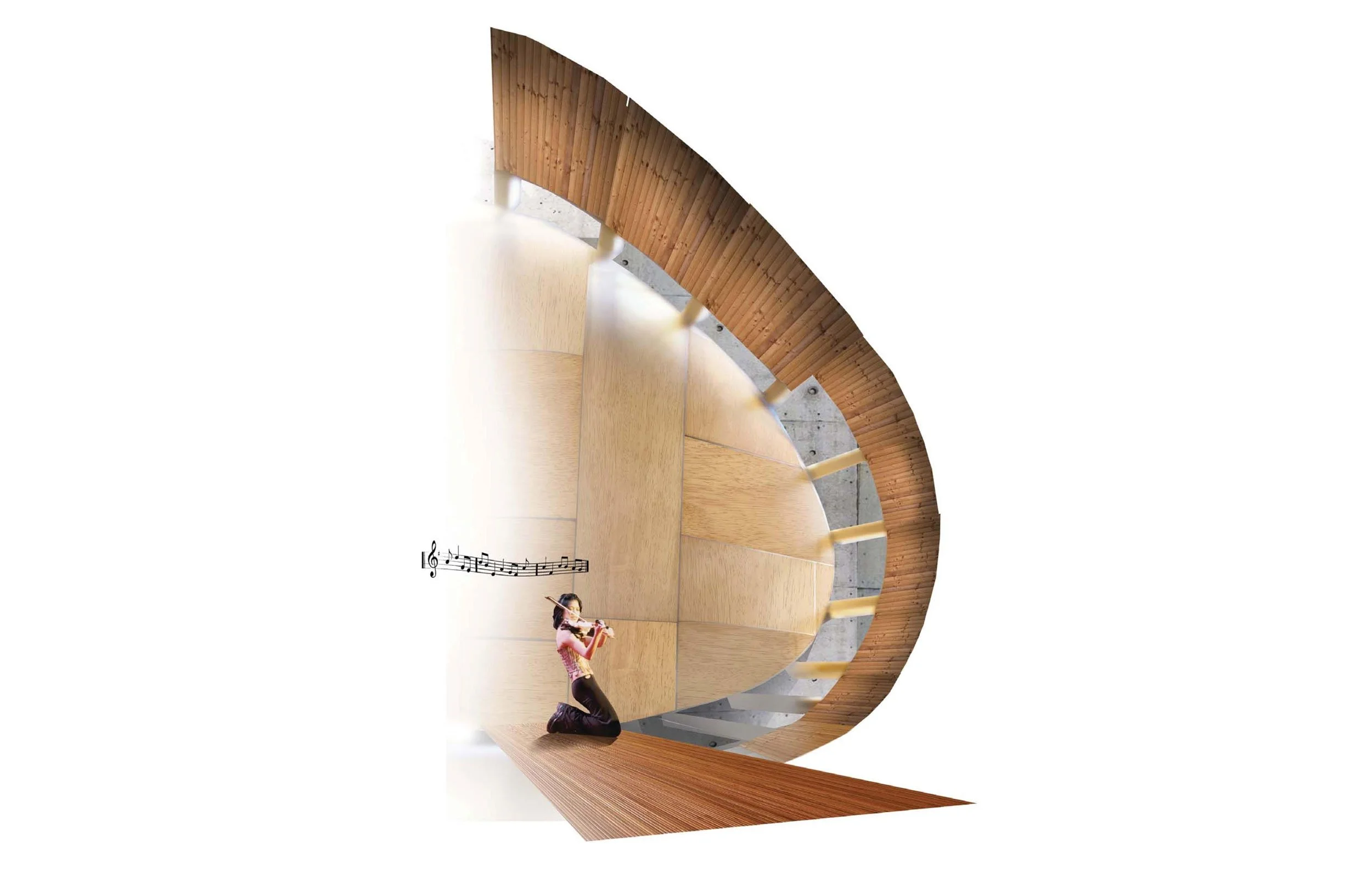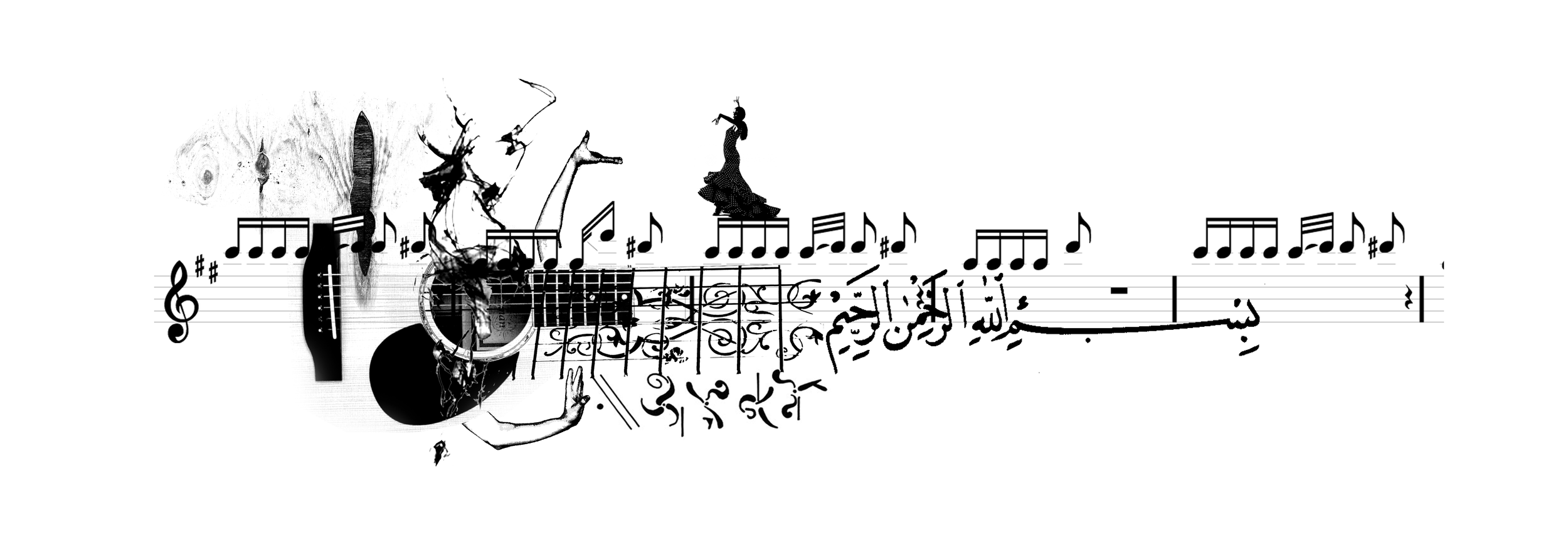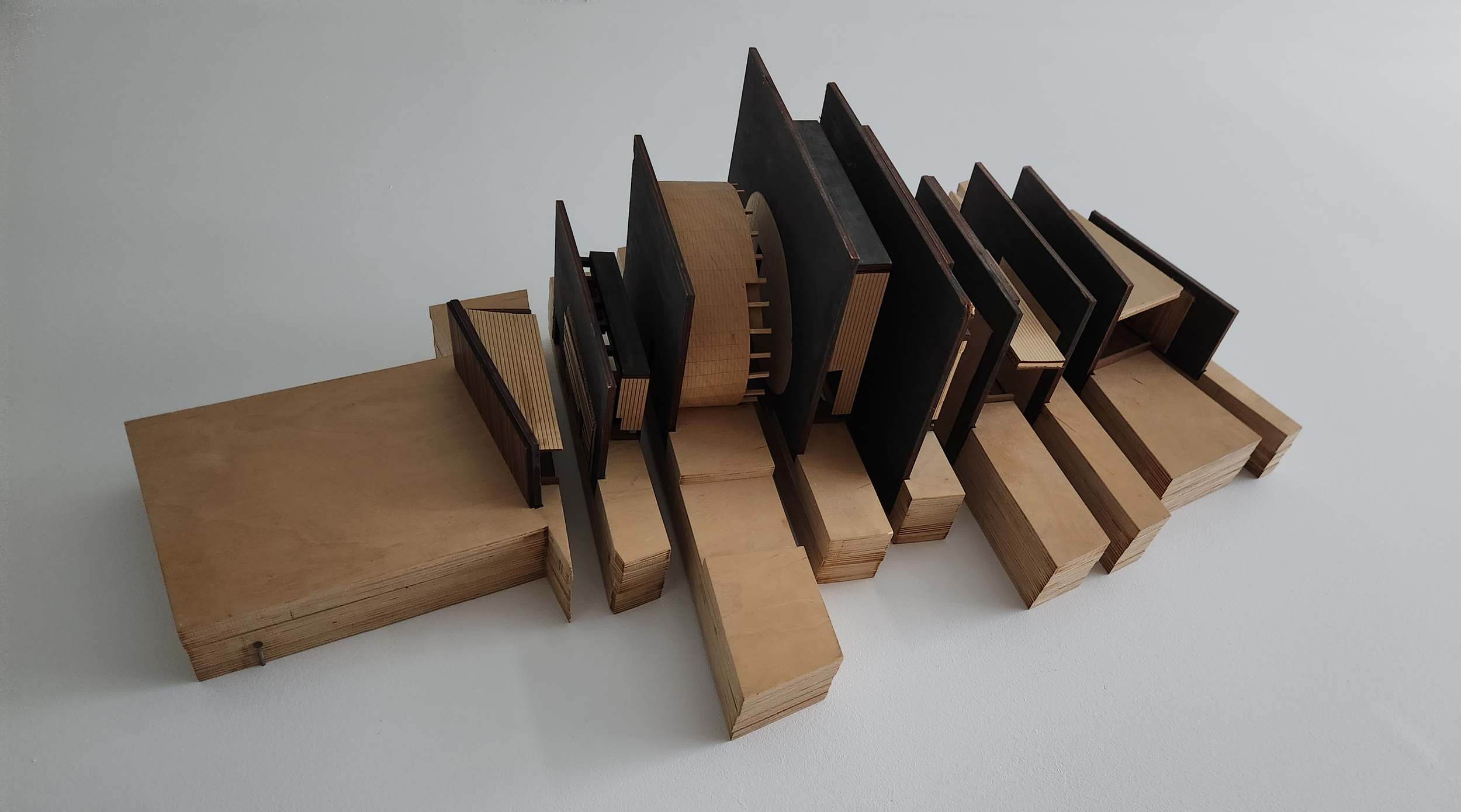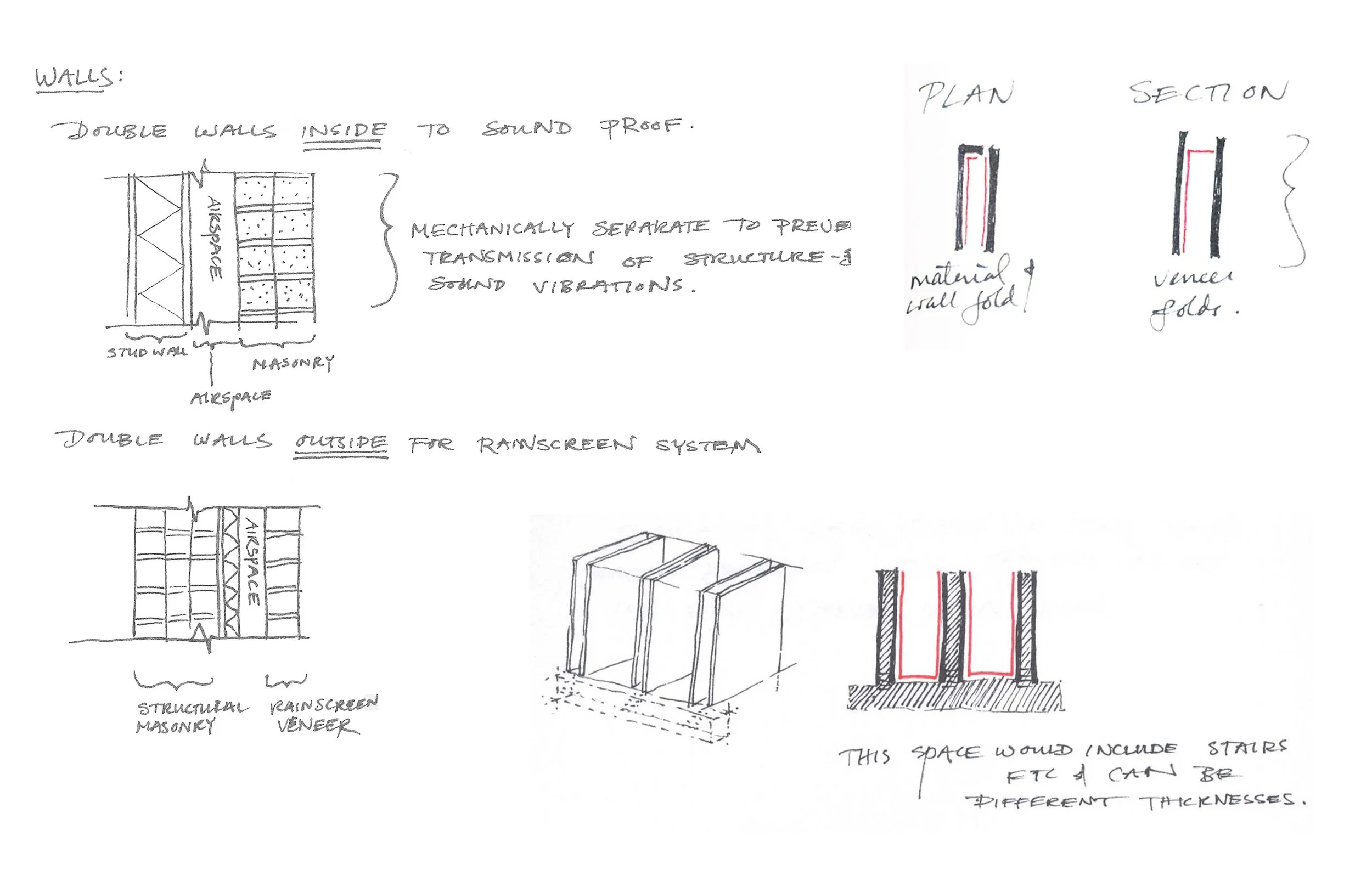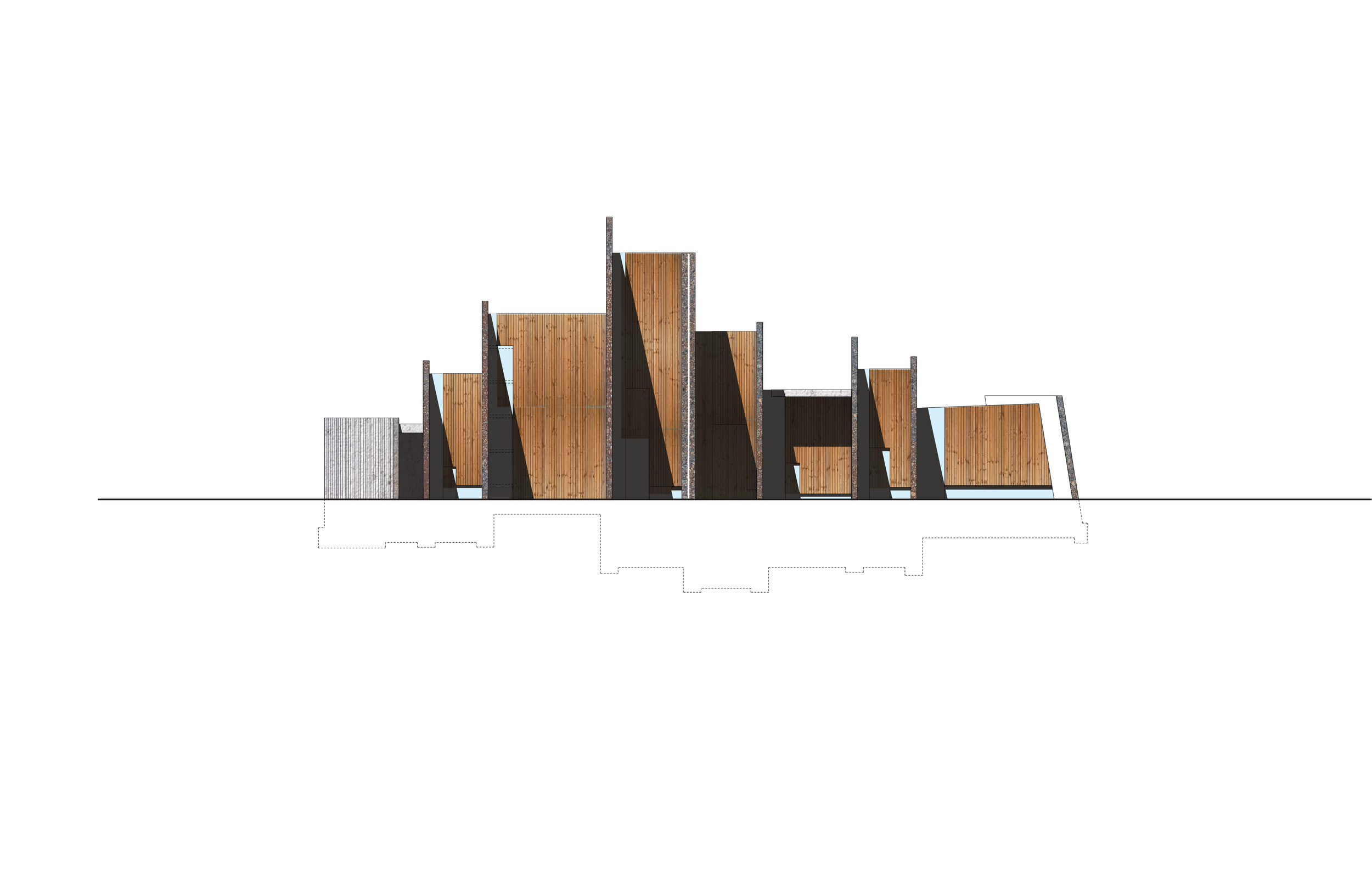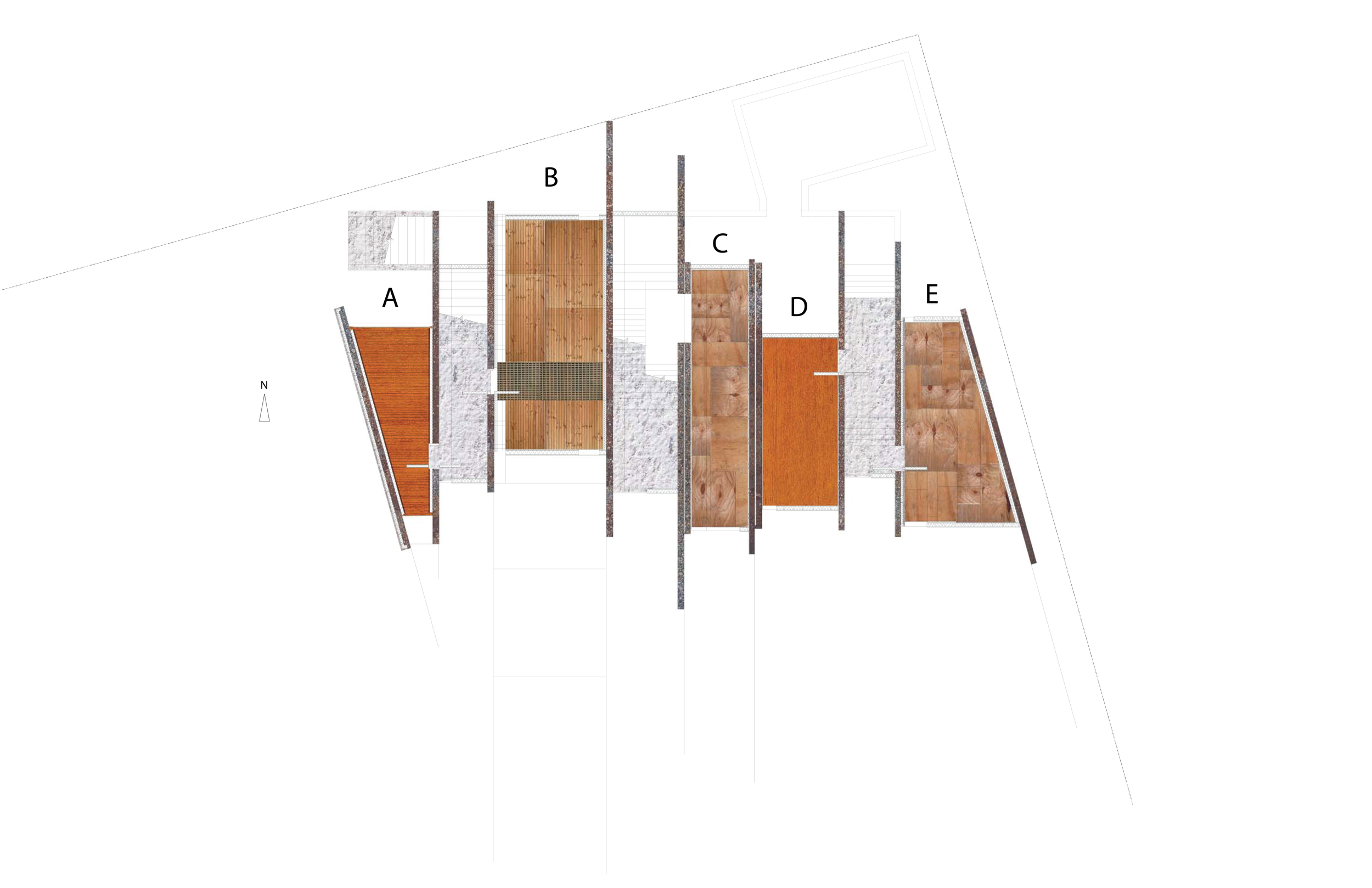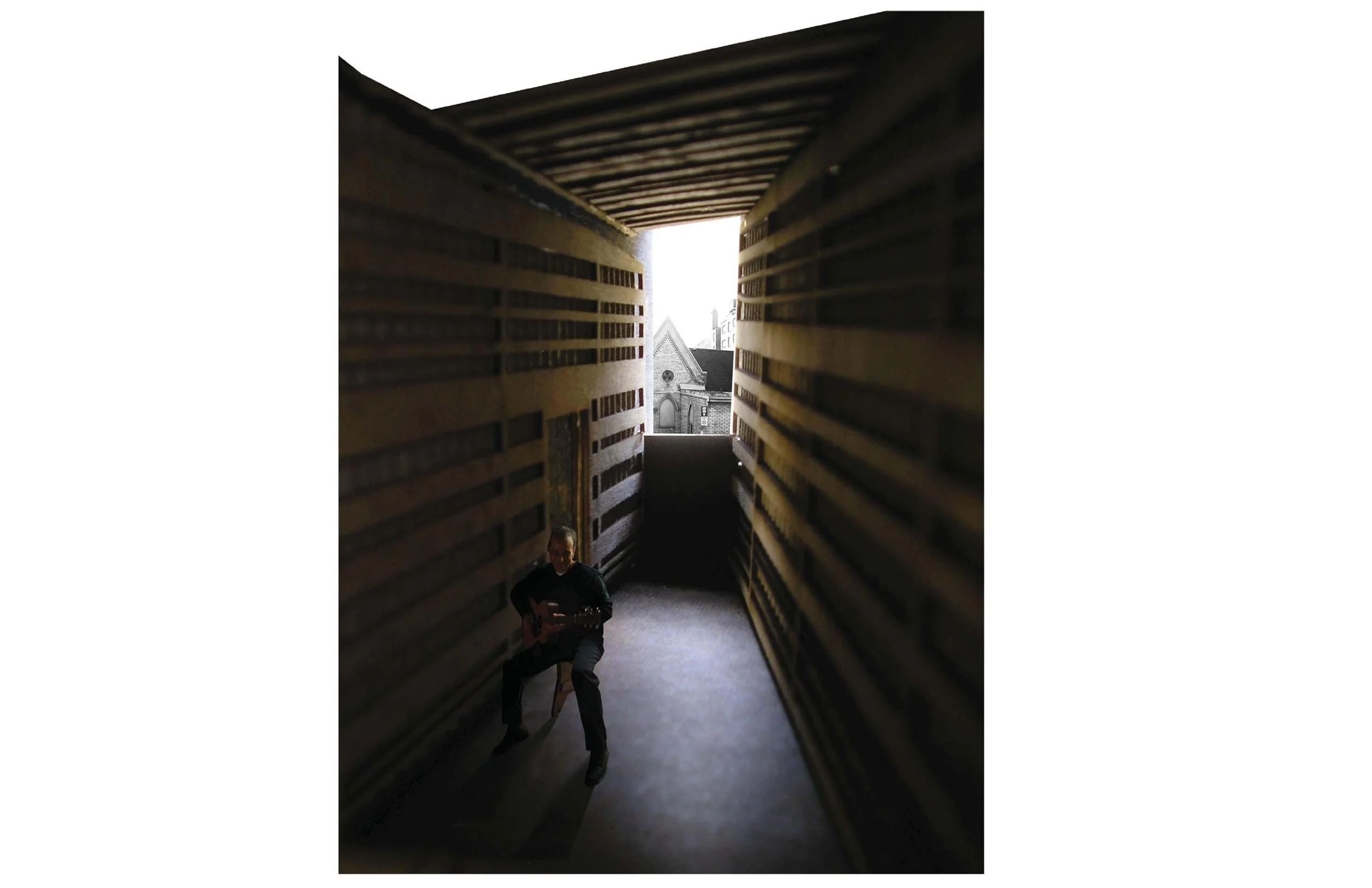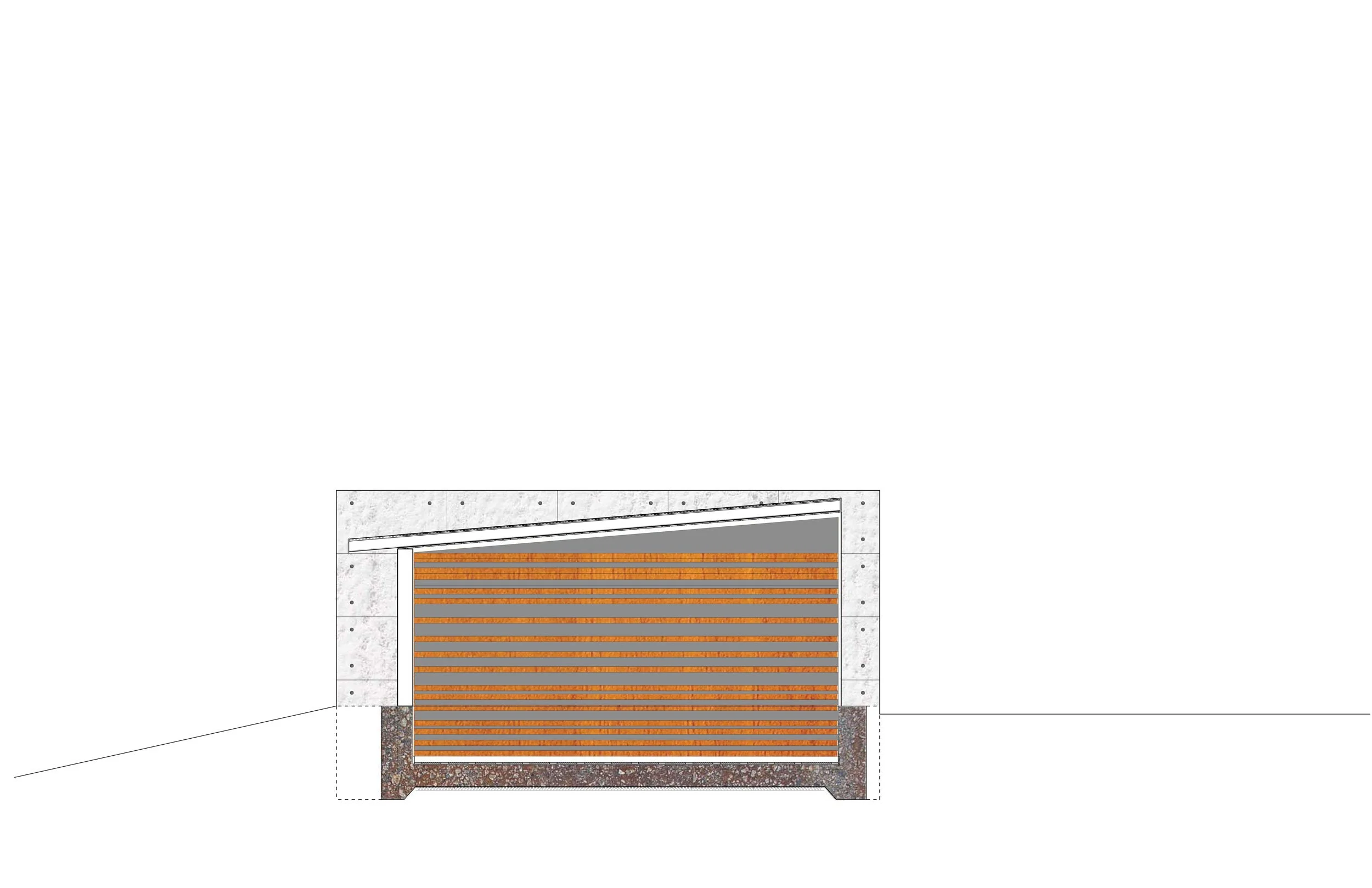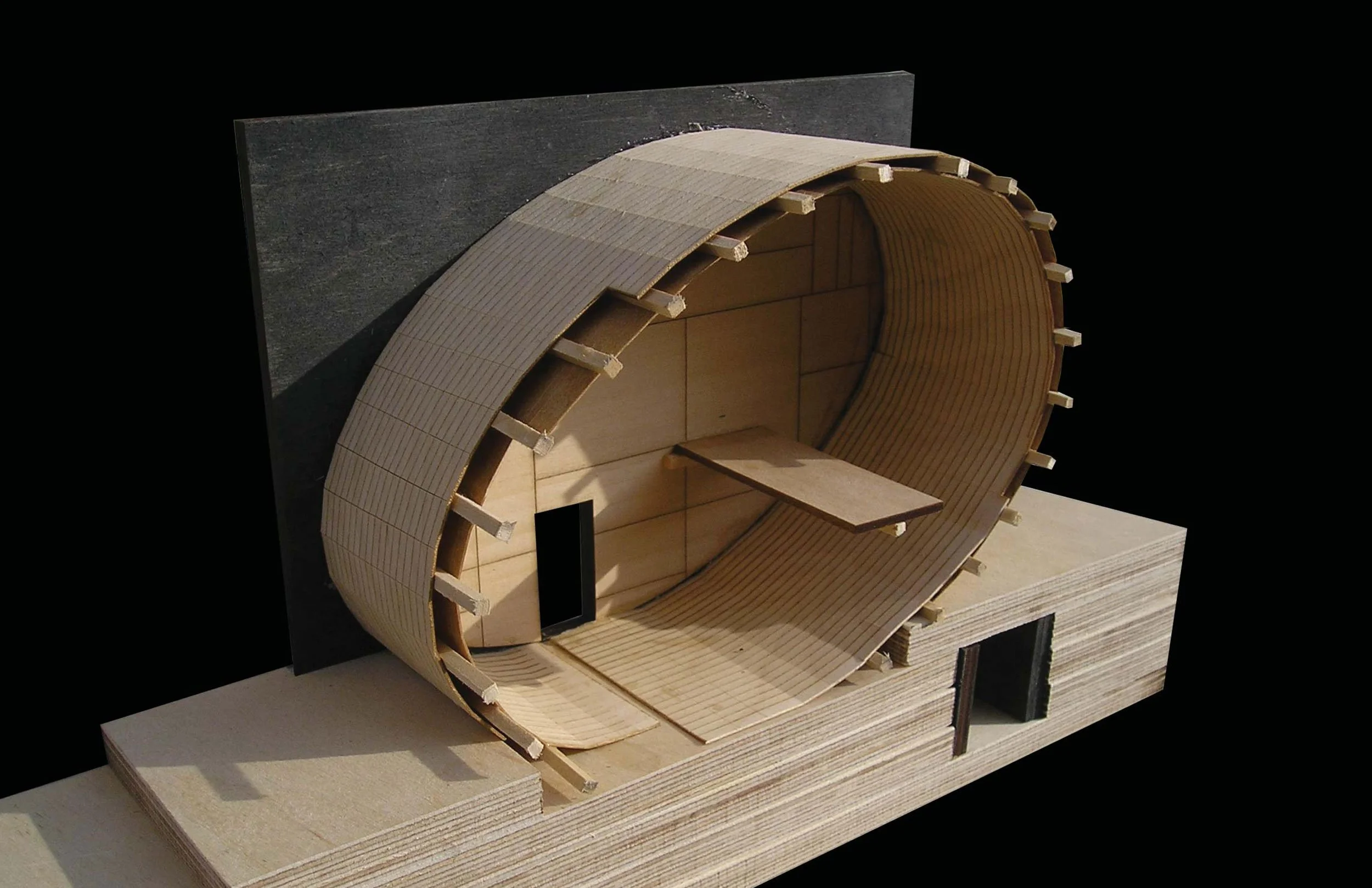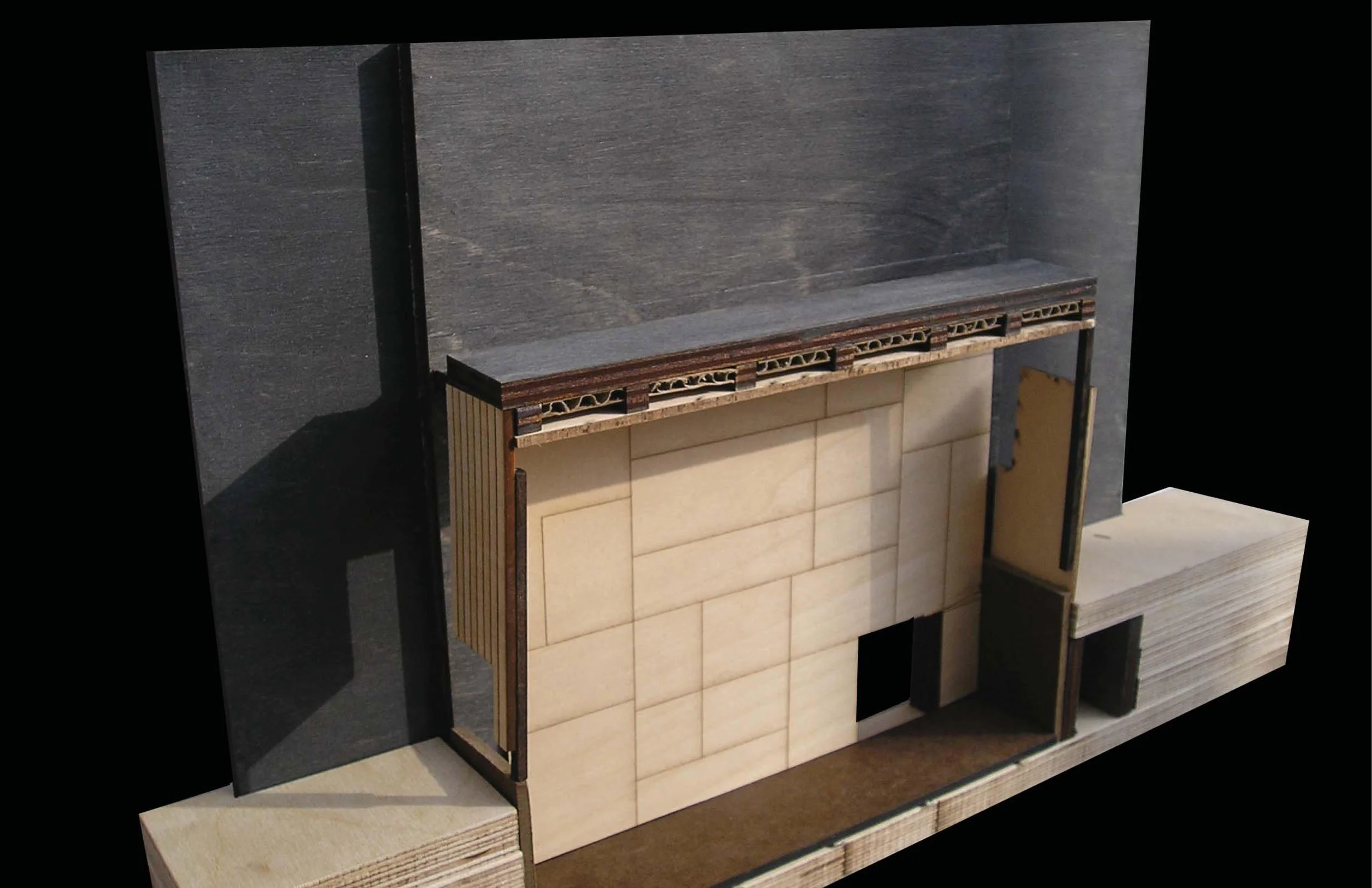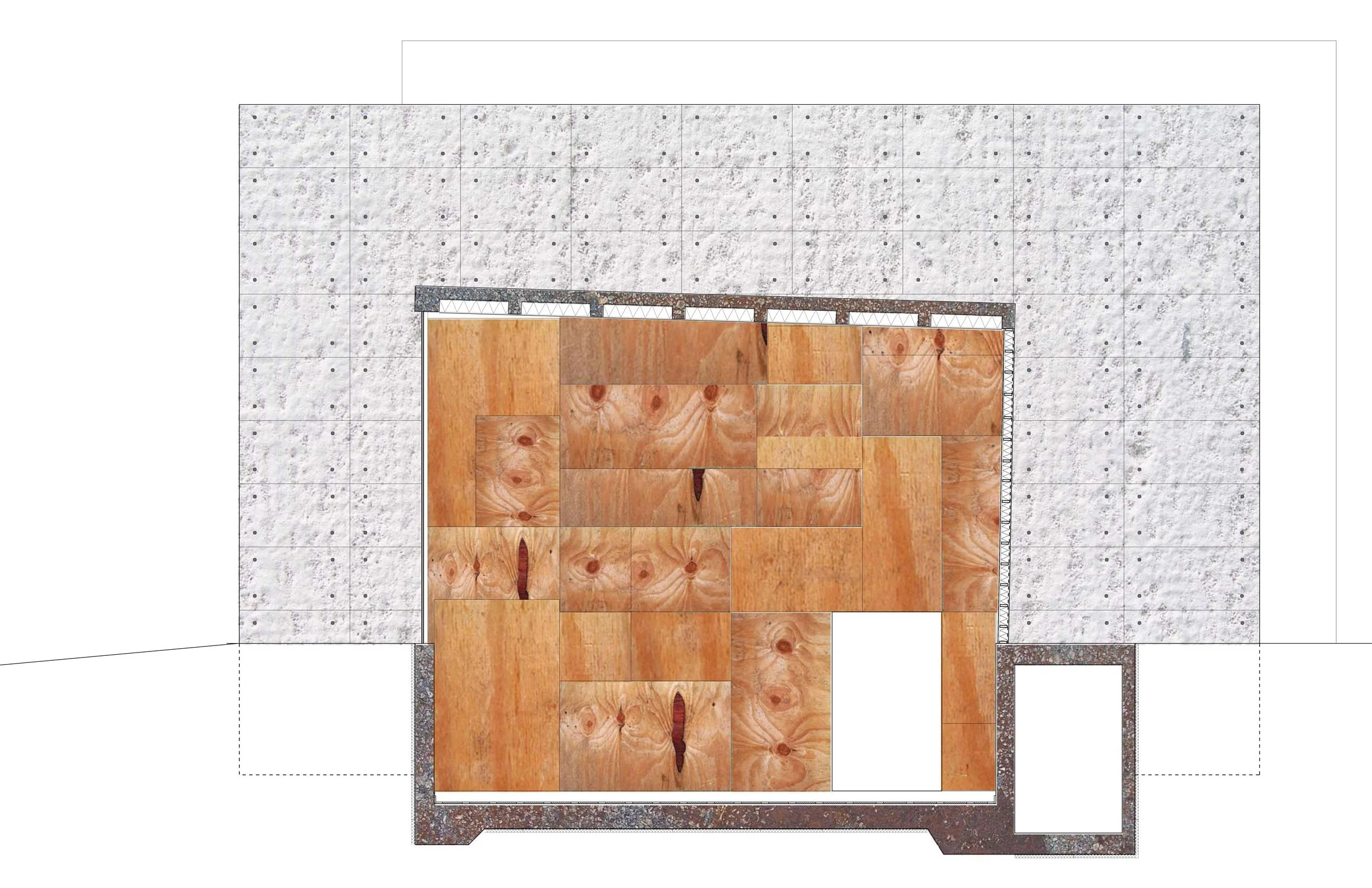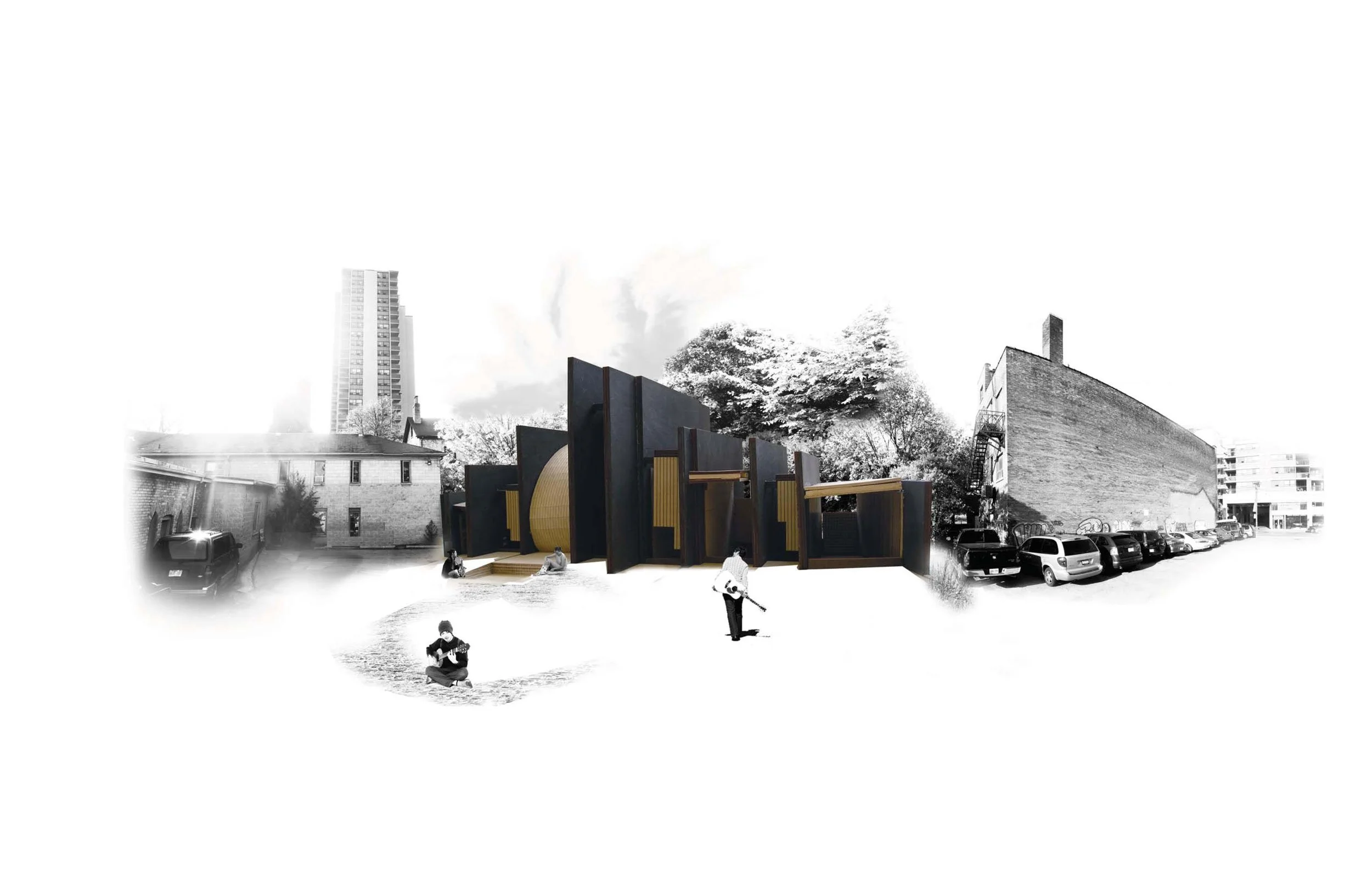Music Gallery
— exploring the interaction between space, material and sound
2007, Academic Project
Advisor: David Liebermann
What if you could use a building as an extension of your musical instrument?
This project manipulates the qualities of space through material, proportion, and isolation, to create different sound environments. These manipulations allow the building’s rooms to enhance or distort the sounds produced by musical instruments played within them. Musicians, or anyone who enters these rooms, will become aware of the impact of architecture on sound and music, and challenge their assumptions about how music is made and experienced.
“Sight isolates, whereas sound incorporates; vision is directional, whereas sound is omni-directional. The sense of sight implies exteriority, but sound creates an experience of interiority. I regard an object, but sound approaches me; the eye reaches, but the ear receives. Buildings do not react to our gaze, but they do return our sounds back to our ears. ”
A. Absorb
Upon entering the Gallery, the first room is closest to what is typically designed for many music rehearsal studios:
Material: this room's surfaces consist of a series of randomly spaced planks covering thick fiberglass acoustic insulation to break up and absorb excess sound.
Geometry: this room has angled surfaces to prevent any reverberance or standing waves, resulting in pure and undistorted tones.
B. Focus
Material: this room consists of smooth reflective surfaces.
Geometry: this room serves to focus sound waves at certain points increasing their loudness. This focal poing changes depending on where the music is performed, so this room contains defined "stage" and "audience zones".
C. Reverberate
Material: this space consists of hard, reflective, heavy surfaces.
Geometry: this space is very long, with proportionally large volume. This creates a delay effect to the reflections and echos heard. The surfaces of this room are slightly mis-angled in order to prevent resonance.
D. Resonate
Material: This room consists of smooth, reflective surfaces
Geometry: This room’s surfaces are parallel and spaced to match a specific fundamental frequency, causing it - and any multiple of that frequency - to increase its perceived intensity.
E. Diffuse
Material: all the surfaces in this room are hard and reflective, but they are not smooth. This causes all the acoustic energy to be reflected in a non coherent manner, adding to the richness and volume of the sound without interfering with its intelligibility.
Geometry: The surfaces are composed of three types of diffusers:
a) Primitive root diffusers, which consist of a surface composed of raised elements
b) One-Dimensional Quadratic Residue diffusers, or Shroeder diffusers, which are surfaces patterned to diffuse specific wavelengths of sound, and can be tuned by increasing or decreasing the depth of the slots.
c) Two-Dimensional Quadratic Residue diffusers, which work in the same way as Shroeder diffusers, but in two dimensions to increase the level of diffusion

